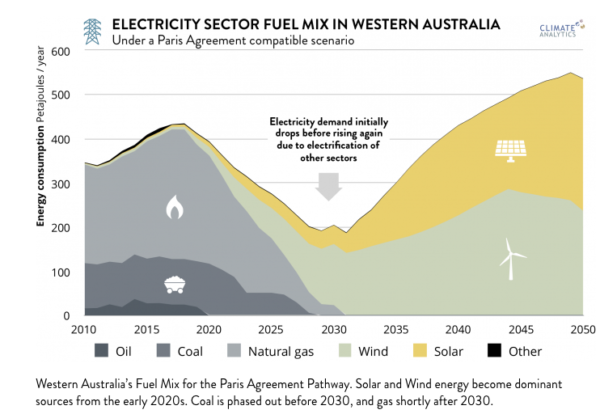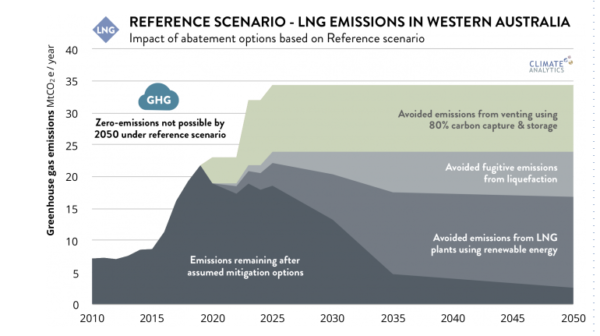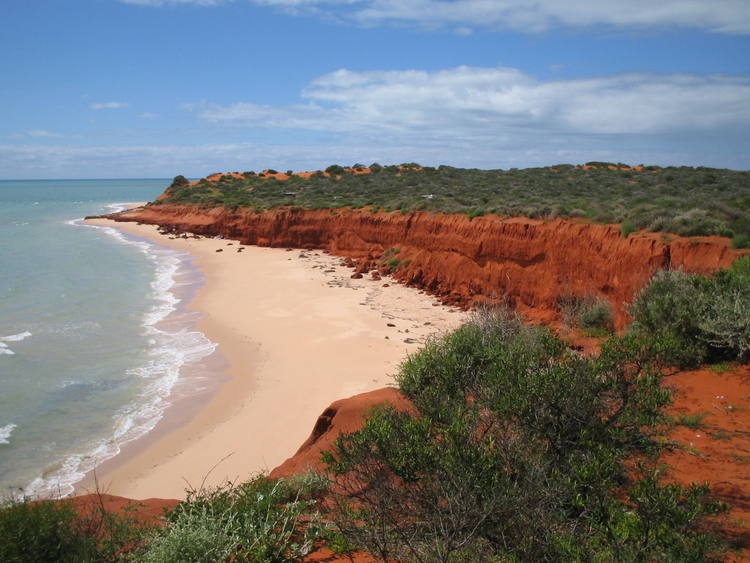Western Australia (WA) could exhaust its 2018-2050 carbon budget some 20 years too early if it maintains current emissions rate, a new report from Berlin-based science and policy institute Climate Analytics finds. The study analyses what actions the state needs to take to play its role in global and national efforts to limit warming to 1.5°C, thereby unlocking significant economic opportunities.
Western Australia does not have a renewable energy target and has an aspirational target of net zero emissions by 2050, which makes it one of the least ambitious states and territories in Australia’s renewables race. In 2018, renewable electricity accounted for 8.2% of the state’s electricity mix, leaving a lot of room for improvement. With its iconic ecosystems, coastal and agricultural regions on the frontline of climate impacts, WA needs to do much more to play its role in global climate change efforts.
The WA budget is 950 million tonnes of CO2 emissions, and while Climate Analytics calculates that the state is poised to use this up in 12 years, it also finds that with the right policies and technologies the state could spread this budget over the next 30 years. “But the pathway to stay within this budget is critical: CO2 emission reductions of about 37% by 2030, 81% by 2040 (all compared to 2005) and zero emissions by 2050 are needed,” the report states.
In doing so, WA would need to focus on the electricity sector and aim for one-third renewable share by 2025, 90% renewable by 2030 and 100% in the early 2030s, Climate Analytics find. This means phasing out coal before 2030 and gas shortly afterwards, while massively ramping up solar and wind capacity.

The report also highlights the liquified natural gas (LNG) sector’s growing contribution to WA’s carbon footprint. It finds the industry’s emissions would be about 1 billion tonnes to 2050, exceeding its entire carbon budget. “The cumulative emissions of the LNG industry need to be reduced substantially and the basic options examined here – through carbon capture and storage of reservoir CO2 and by introducing renewable energy quickly into the LNG manufacturing process – would need to be deployed in either case,” the report states.

Furthermore, Climate Analytics highlights the great economic potential opportunity for WA to develop new added-value manufacturing industries and create jobs while moving away from being an exporter of carbon to becoming an exporter of zero-emission energy carriers (green hydrogen, ammonia, or electricity) and products, in particular to neighbouring South East Asian countries.
While much remains to be done with regard to decarbonization across sectors, some steps have been made in the right direction. With abundant deposits at hand, WA is looking to position itself at the forefront of global battery manufacturing. Earlier this year, the state government launched a strategy to grow WA’s future battery industry, which aims to grow the state into a leading exporter of future battery minerals, materials, technologies and expertise.
The state government has also launched a $10 million Renewable Hydrogen Fund in a bid to drive a new job-creating industry harnessing the state’s renewable resources. The fund’s strategic focus areas will be export, remote applications, blending in gas network and transport.
This content is protected by copyright and may not be reused. If you want to cooperate with us and would like to reuse some of our content, please contact: editors@pv-magazine.com.









I don’t know how it’s monitored or even IF it is measured. But natural gas drilling , fracking, and the “disposition” of gas escaping at the well head may also be a problem that CO2 sequestration won’t help. The already “poster child” of CO2 sequestration, deemed “clean coal” at one time was tried by Government funding by the Southern Company in Mississippi at the Kemper coal fired plant. It never performed as it was advertised by the designers. It was over cost, something like $7.5 billion dollars and did for a while put power onto the grid at $95/MWh, when solar PV and Wind generation could be bought for $50/MWh at the time. In 2017 the Kemper plants boilers were changed over to natural gas fired boilers, in order to use the plant in a more efficient manner.
This asset may never pay for itself, even in 30 years of operation. If solar PV and wind generation keeps coming in at some reported project costs of the low $30/MWh to mid $20/MWh, I can’t see this project ever being more than an albatross around Southern’s neck.